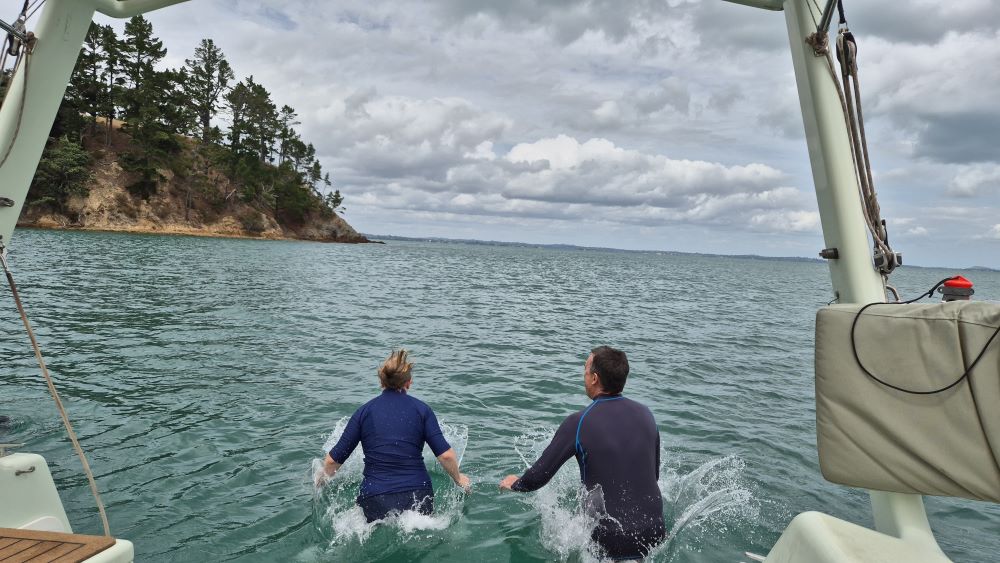 |
Abandon Shizen!!!!!
What happened? We walked ashore fine last time!
Fantastic Friends & Fitzgibbons’s Family Frolic Frequently Far From Fredericksburg.
Boat jumps: the easiest way to make a splash.
When life gives you boats, jump off of them!
Where is Kumi in this Kurrent Kalendar Kompetition??
|
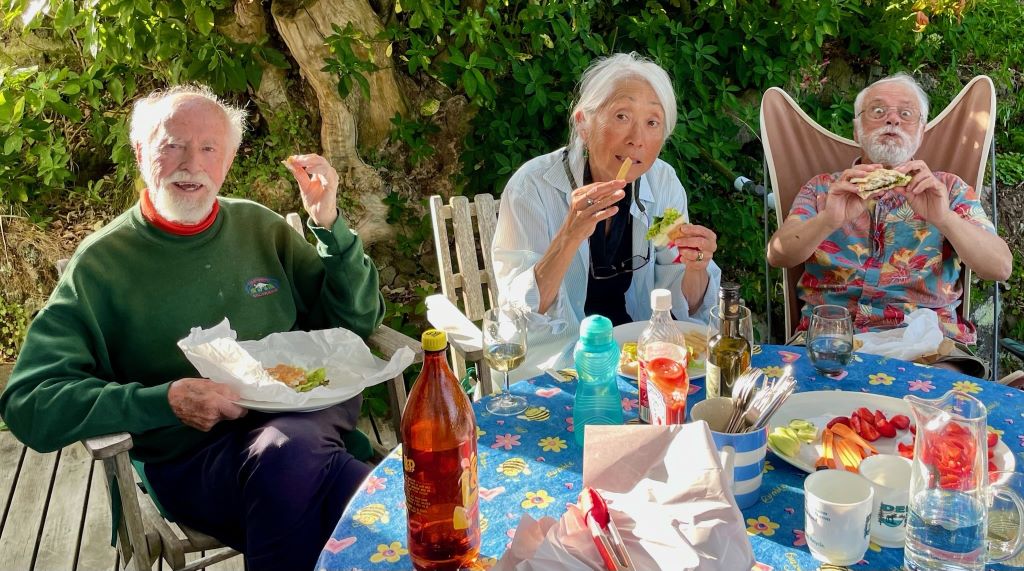 |
Eat this and your joints will instantly become metal!!Please Sir, I want some more. Burp Jon: chilli fish! Yoshimi: These chips are so good! I'm sure Jonny won't mind driving out here to get fish and chips next Friday. |
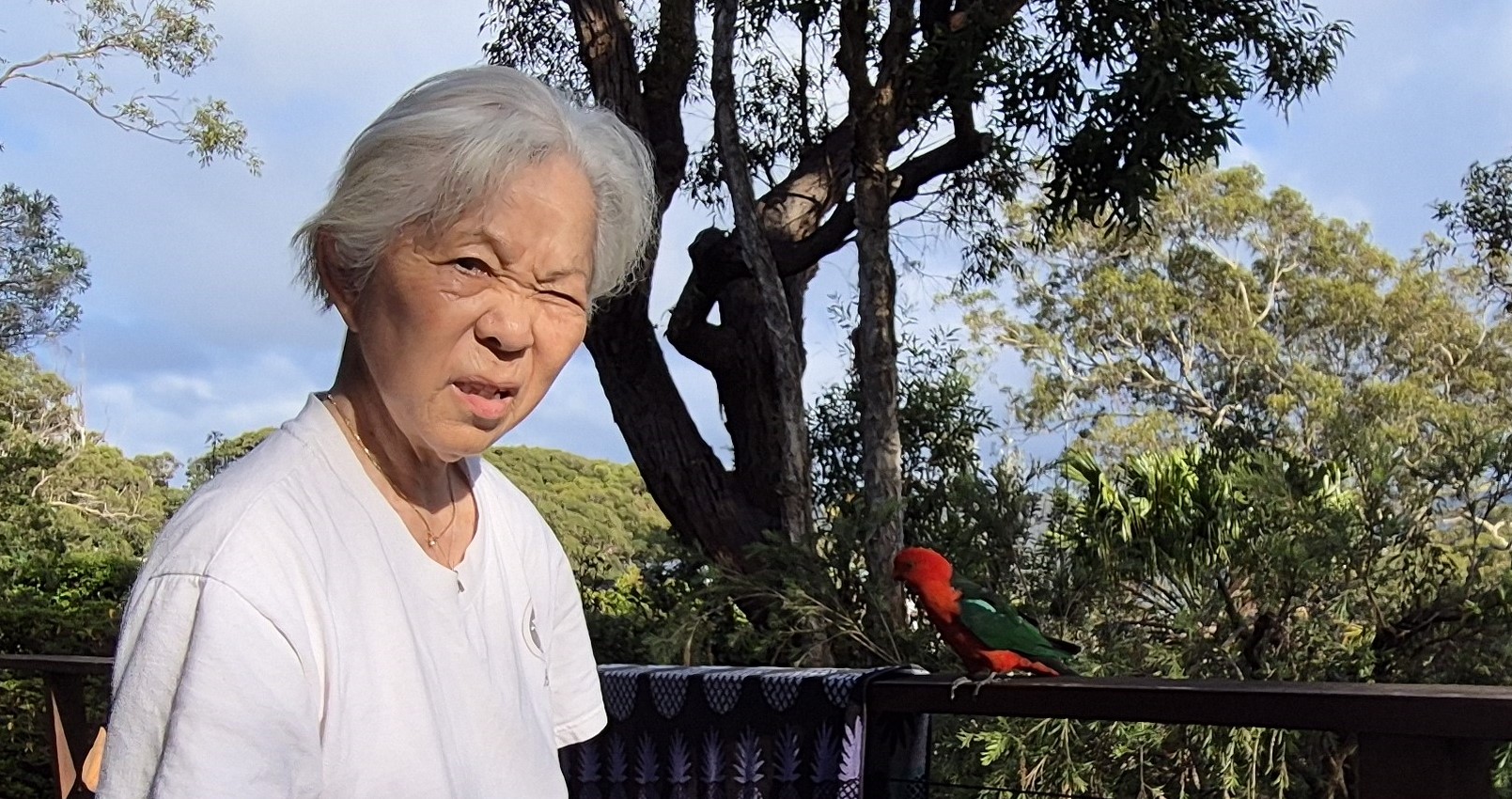
 |
Eat this and your joints will instantly become metal!!Please Sir, I want some more. Burp Jon: chilli fish! Yoshimi: These chips are so good! I'm sure Jonny won't mind driving out here to get fish and chips next Friday. |
 Flight Emissions & Gift 4 Nature
Flight Emissions & Gift 4 Nature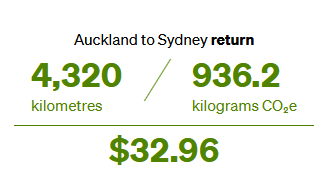
Christmas 2024 International airfares were all-important for our family...but what about the cost to the climate? Here's a breakdown for those interested in the numbers...
Air New Zealand Flights: What were the flight emissions for our 3 hour return trip, Auckland-Sydney? According to Air New Zealand, it was nearly 0.9t of CO2 equivalents for two economy class seats. A bit light, but fortunately they have a comprehensive Voluntary Emissions Contribution Programme for where the offset funds are spent.
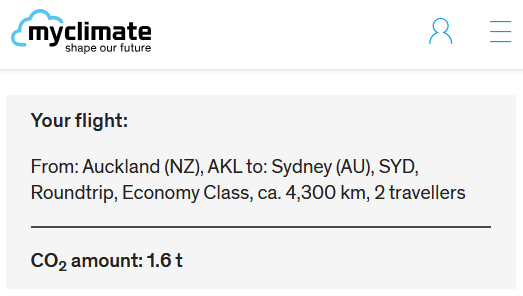 myclimate.org Calculation: This website calculates the CO2 equivalents at 1.6 t, nearly double Air New Zealand's 0936 t.
myclimate.org Calculation: This website calculates the CO2 equivalents at 1.6 t, nearly double Air New Zealand's 0936 t.
Fuel: According to myclimate.org's Calculation Principles, it includes the CO₂ emissions through pre-production of jet fuel/kerosene (including transport and refinery processes) and fuel combustion. However, they do not include the cost of creating the pipelines or tankers.
Cabin Class: one might think that flying economy or business class would not affect the flight emissions, but First and business cabin classes take up more space and thus do not allow for as many passengers as an aircraft with only economy class seats. The seats are bigger and heavier, plus the baggage allowance is larger, all contributing to higher emissions.
Airports: Emissions from airport operations are also included, but not the cost of building the runways or terminals, or the regular upgrading of the terminals.
Clearly there are many ways to calculate emissions contributions and of course the best way to reduce emissions is not to fly.
Yoshimi and Jon's Gift 4 Nature project effectively reduces flying by doubling the $cost, matching investment in Nature with investment in air travel (i.e. the cost of airfares). "But surely flying at peak period is a lot more expensive, but the same emissions!". That is the whole point of matching dollar for dollar - there is no technical argument about what is fair, or what is correct. Bottom-line, if everyone can do their bit to reduce environmental damage... there's more hope for future generations.
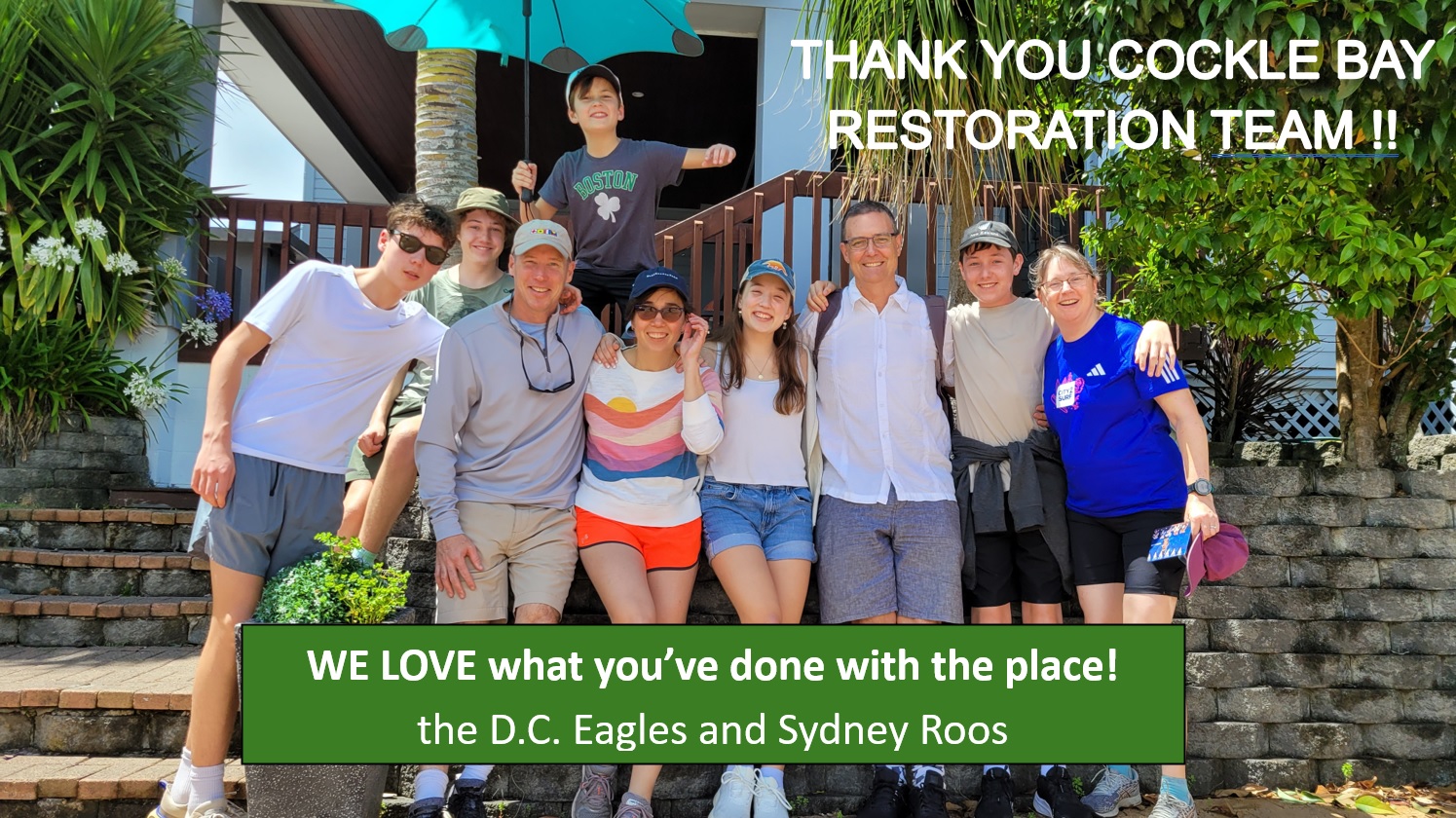
Over the years, the Cockle Bay Domain has transformed into an ecological paradise…thanks to the determination, perseverance and hard mahi of the locals.
The Bretts rented a house in Cockled Bay for their USA family and wanted them to appreciate the impact of community restoration...so they created a Discovery Trail for them to experience. One person tackled the 4+km run whilst two teams took on the 1km challenge (the Eagles landed from USA at 6am that morning!). The quiz debrief was hilarious, especially as one team got lost!
 AUD$1500 to Seven Generations Forestry
AUD$1500 to Seven Generations ForestryThis Gift for Nature is linked to whanau (family) in Australia. A number of Bretts, including Jon's Mum, uncle, brother and on the Solstice, Dec 2024, our nephew passed from cancer. In honour of them and the families we visited in Oz, 100% of this donation will be used to purchase native plants. The "Seven Generations Forestry" concept is inspired by Indigenous principles of thinking about the land and its resources across seven generations (past, present, and future). The aim is to inform investment strategies with Indigenous wisdom and partner with local communities. A group of Northern NSW doctors, engineers, journalists, and social workers aim to increase sustainability for future generations and regenerate the land. Since purchase in 2022 they have planted over 8000 trees as well as renovating a great old queenslander. They area also building a nursery and hope to get plenty more planting and growing done over the next years.


Volunteer planters. Their priority is to plant native trees for 7gen. Short-term, they're focussed on waterways and have planted 10,000 trees mostly along gullies. Their aim is to plant 60 hectares of a 80 hectare property. They're currently chasing a grant to help plant 20 hectares over next 5years in flood gum and black butt (Eucalyptus pilularis).
 AUD$1500 to OzHarvest
AUD$1500 to OzHarvestFounded by Ronni Kahn AO in 2004 after noticing the huge volume of food going to waste, OzHarvest quickly grew to become Australia’s leading food rescue organisation. Food is at our core, saving surplus food from ending up in landfill and delivering it to charities that help feed people in need. We are committed to halving food waste by 2030, inspiring and influencing others to do the same, and transforming lives through education. They do great things for people in financial hardship and the hard working farmers. They promote "waste not, want not". Every $1 donated allows OzHarvest to deliver two meals to people in need.
Founded by Ronni Kahn AO in 2004 after noticing the huge volume of food going to waste, OzHarvest quickly grew to become Australia’s leading food rescue organisation. Food is at their core, saving surplus food from ending up in landfill and delivering it to charities that help feed people in need. They are committed to halving food waste by 2030, inspiring and influencing others to do the same, and transforming lives through education.
Food waste is incredibly costly to the climate. Learn more at Project Drawdown. This organisation provides science-based evidence to help us understand what's happening and what we can and must DO to ensure a safe, thriving future for our grandchildren and gens to come.
Page 1 of 3